MS Mocatta 20: Taking a closer look at fragments of a 14th century Quran
By Sarah S Pipkin, on 30 June 2023
Over the course of Spring 2023 we worked with our UCL Library Services’ colleague Abida S. to take a closer look at MS Mocatta 20: Fragments from the Holy Quran.
I am grateful to have been given this opportunity to take part in a fun project with UCL’s Special Collections team to showcase a 14th century Quran manuscript on the library social media account. The Quran is the holy book for Muslims. To be able to witness first- hand a Quran manuscript from the 14th Century was a special moment. I had this overwhelming feeling of awe and fascination when viewing a piece of history that has been preserved so well for centuries and I was able to read this Quranic Arabic text that is written in an intricate “muhaqqaq” script. This is the same Quranic words that is read today, unchanged.

MS Mocatta 20. Photo by Abida S.
The Holy Quran is the sacred religious book of Islam. In Islam, the Quran is God communicating with mankind. Reciting the Quran is a religious duty for Muslims, especially during Ramadan. It allows you to connect with the Quran’s message and is a rewarding spiritual practice.
UCL’s manuscript, MS Mocatta 20, is thought to date from the 14th and 15th Century and was previously owned by the historian Fredrick David Mocatta. Upon his death in 1905, the Jewish Historical Society of England deposited his collection with UCL. It is unknown how this Arabic manuscript ended up in Mocatta’s collection, but he may have acquired it as part of his historical research.
The manuscript is written in an intricate “muhaqqaq” script in black ink. This majestic type of script was considered one of the most beautiful, as well as one of the most difficult to execute well. A distinct characteristic of this script is that it’s descending strokes end in a straight, sharp point rather than turning upwards in a hook.
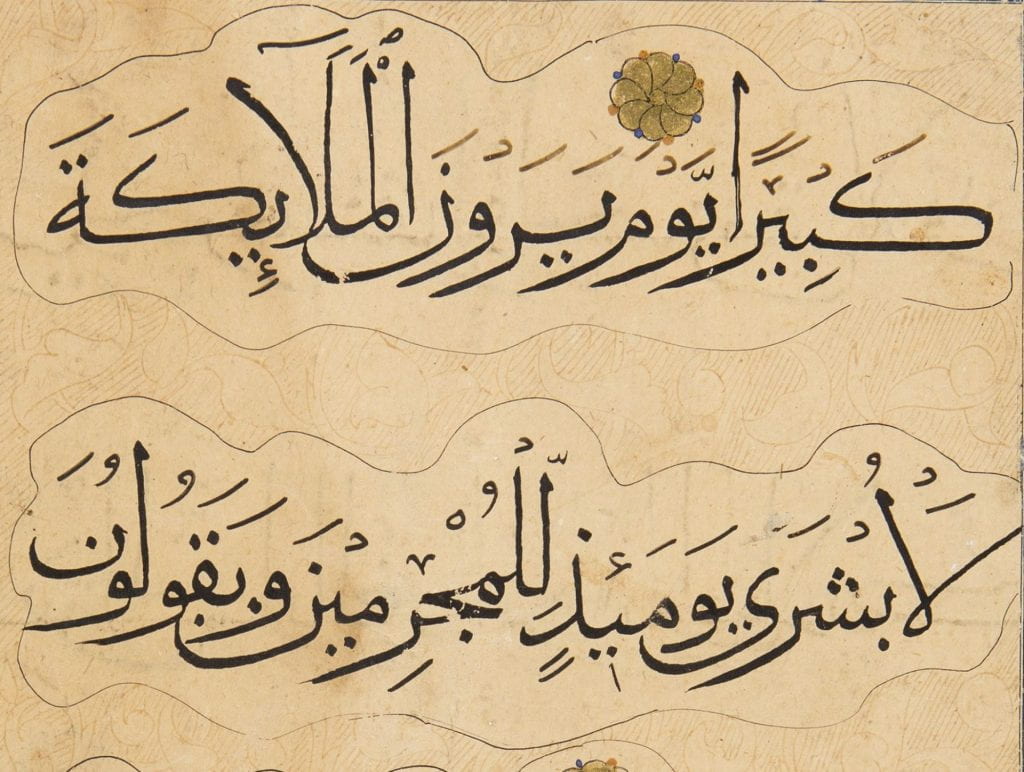
First two lines of leaf 2r of MS Mocatta 20
UCL’s fragments include juz’ 19 of the Quran, Surah 25 titled “Al-Furqan, The Criterion”. It is the 42nd Surah to be revealed in the Quran. This juz’, which means part, contains verses 21 to the beginning of verse 62 from Surah Al-Furqan. These particular verses deal with themes of prophethood and resurrection on the Final day of Judgement and the believers’ place in Heaven.

A large, elaborate roundel

A smaller roundel showing signs of wear
There are small roundels on the pages which are used to mark the beginning of each verse. Verse 21 has a decorative page which indicates the start of the juz’ 19 in this surah. These pages are part 19 of the 30 sections of the Quran. This manuscript fragments are written in ink on paper, with colored symbols and gold leaf detailing. It is unknown why these particular pages did not arrive as part of the complete Quran. However, the condition of this manuscript and signs of wear suggest it was regularly read and transported around.

First page of MS Mocatta 20. Photo by Abida S.
I appreciate how I was given access to a Special Collections archive of a 14th Century Quran manuscript. It not only allowed me to interact with a historical, significant religious holy book that is key to my Muslim identity; but it also introduced me to the traditional format of manuscripts from the past and the physical material and finish of one. Access to Quran manuscripts from the past is so important to keep awareness of traditional manuscripts and religion alive and to appreciate and understand the culture of religious manuscripts.
Thank you again to Abida for her research into MS Mocatta 20! Portions of the juz’ have been digitised, and our collections are open to anyone to come and view. For details on how to make an appointment to view items in our collection such as MS Mocatta 20, check out our “visiting us” page.
Brenda Salkeld and Eleanor Jacques: the lost letters of George Orwell
By utnvsea, on 28 June 2023

More than a decade ago, the family of Eleanor Jacques discovered a cache of papers hidden in a handbag in a garden shed. On the envelope was written ‘Letters to be destroyed’ and upon opening them, they found handwritten letters to Eleanor from George Orwell, who had been her next-door neighbour in Southwold, Suffolk.
At an event in 2018 to celebrate the discovery of these letters, another sensation was created when an audience member announced that she had at home letters from Orwell to her aunt, Brenda Salkeld, also a Southwold neighbour.

There had long been rumours of the existence of these letters amongst Orwell scholars, who hoped to uncover more correspondence with these long-standing female friends. Through serendipity, both sets emerged with a year and were purchased by Richard Blair, Orwell’s son. The letters have now been placed in the Orwell Archive in UCL Special Collections, catalogued and digitised for public access, with the kind permission of the Orwell Literary Estate.
What is so special about the letters?
The letters span a long range of time, 1931-1949, and continue throughout both of Orwell’s marriages – to Eileen in 1936 and Sonia in 1949. They reveal new details about Orwell’s life in the 1930s – including his overlapping romances, his love of ice skating, and his struggle to write and publish his first novels. They also show that the two women, whom he met while staying with his parents in Southwold, had a profound importance in his life lasting long after his romances with them appear to have ended. Eleanor would go on to marry one of Orwell’s best friends, Dennis Collings.
In a letter to Brenda in 1940, four years into his marriage with his first wife, Eileen O’Shaughnessy, and as a German invasion appeared imminent, he wrote: “It’s a pity … we never made love properly. We could have been so happy. If things are really collapsing I shall try and see you. Or perhaps you wouldn’t want to?” Orwell also wrote to Brenda from his hospital bed (at University College Hospital), sending his last letter four months before his death in 1950, just as he was about to marry his second wife, Sonia Brownell.
The letters also reveal something of Orwell’s writing practice. D.J. Taylor, who helped to track down the letters and has just published an updated biography of Orwell, said:
“In terms of improving our understanding of Orwell’s work, I have a strong suspicion that his letters to Eleanor reminiscing about their country walks at Southwold may have inspired similar passages describing Winston’s affair with Julia in Nineteen Eighty-Four.”
The collection is also notable for the playful drawings Orwell added in the margins of his letters to Brenda, something that is rarely found in his other correspondence. They include images of Billingsgate Fish Market, windmills and the infamous ice rink.

The bulk of the letters have not been publicly available before.
The George Orwell collections at UCL
The George Orwell Archive has been a cornerstone of UCL Special Collections for over 60 years. Deposited by his widow in 1960 and built up over subsequent decades, it is the main resource for Orwell scholars around the world. Comprising manuscripts and typescripts, diaries, notebooks, letters, photographs and family material, including the papers of his two wives, Eileen and Sonia. UCL also holds substantial book collections relating to Orwell, including books owned by him and rare editions of his works.

New Short Film Celebrates Successful Collaboration with the Orwell Youth Prize
By Vicky A Price, on 26 June 2023
The last year has seen Special Collections’ Outreach programme go from strength to strength. We have welcomed school and community groups to a wide range of activities, especially at our new campus at UCL East, and exciting plans are afoot for next academic year. That said, it is always beneficial to look back at triumphs and celebrate them when you can. The upcoming anniversary of George Orwell’s birthday (120 years!) is a great opportunity for us to celebrate something that took place last summer at UCL’s Bloomsbury campus with a very special delivery partner, The Orwell Youth Prize. This new short film does just that:
Delivering a Summer School to Year 12 students from around London is always a brilliant way to explore our collection at UCL Special Collections, as it gives us the chance to spend quality time with young learners and offer them an extended opportunity to engage with the collection. This was a particularly special project, as The Orwell Youth Prize had worked with us to bring in professional, trailblazing journalists, who could share contemporary experiences and advice on becoming a journalist. Alongside this, we were able to present Orwell’s experiences (as represented in the UNESCO registered Orwell Archive), make meaningful comparisons with our guest speakers’ experiences and find present-day applications of Orwell’s principles and journalistic outlook.

Participants interrogate a manuscript from the George Orwell Archive
Finding the right partners to collaborate with, who share similar goals and who can offer something unique to our programming, is often an essential part of our work in the Outreach team. While this way of working can require careful planning and meticulous, consistent communication, the success of this summer school is testament to the huge potential rewards.
Tabby Hayward (Orwell Youth Prize Programme Coordinator) also recognises the benefits that Special Collections brought to their programme; “We were delighted to work with UCL Special Collections on this Summer School, for so many reasons. At the Orwell Youth Prize, we’re always trying to find new ways to get young people excited and inspired by the life and work of George Orwell, and his profound continuing relevance today. Special Collections provided the fantastic opportunity to share the Orwell Archive with the Summer School participants, allowing them to get up close and personal, exploring manuscripts, diaries and photographs. This direct experience really helped the participants to develop a deeper understanding of Orwell as a man and a writer, and we felt very lucky to be able to offer this. We were also so pleased that some of the Summer School participants went on to enter the Orwell Youth Prize this year, bringing everything together. It felt like a really fruitful and productive partnership and we’re looking forward to more collaborations in future!”
One very special output from this Summer School was participants’ writing. We are delighted to share some excerpts with you from three participants’ pieces in this blog. We asked our Year 12 cohort to find a topic that they were passionate about and to write a persuasive, argumentative piece that spot lit their own voice, using Orwell’s principles of clarity, directness and language economy:

A participant speaks with Marianna Spring, the BBC’s Disinformation and Social Media Correspondent and guest speaker at the Summer School.
Never Again by Jafa Bin-Faisal (a piece about the persecution of the Uyghur people in China)
After hearing about the immense economic influence of China, it’s perfectly understandable to feel hopelessly underpowered against a country with the second highest GDP in the world. But remember, a fire that engulfs a whole forest begins with a small spark, and it is our efforts right now that will provide the fuel for this spark to begin. We need to pressure our government into taking real action against the CCP, and this can be done through two main avenues: petition and protest.
Petitions are a great way to get issues being discussed in parliament, and it tells the government that the British people care about the welfare of the Uyghurs. In this age of social media, it’s easier than ever to increase awareness and gain signatures for these online petitions. Protests are another impactful way to visually show and physically impose pressure on the government, as it shows that we the people are willing to use our free time and use it to speak out against this injustice. Protests are already being organised, and just by marching, you are strengthening the legitimacy and impact of the message and movement.
CHAD AND STACY: THE PARADOX OF INCELS by Zara Hossain (a piece about misogyny and the internet’s power to amplify it)
The pitfall to such circles [online Incel forums] begins on mainstream sites like Youtube; the algorithm may begin with simple, innocent videos like “how to be more attractive to women,” or “dating tips,” or “how to be more masculine”, but these titles quickly open the door for more extreme content which is blatantly misogynistic. These videos tend to encourage men to embrace masculinity to an extreme degree, such as by asserting their power over women, refusing to be a “beta”, a term used to describe a man who is cowardly, especially in situations which involve approaching women. These videos depict a power imbalance between man and woman, as the man is urged to always be in control of the situation, to never let emotions cloud judgement and to never show signs of weakness. In contrast, women are portrayed as a homogeneous identity where every woman is only attracted to men who are strong, unemotional, in control, or “alpha.” In this “alpha” dynamic, the man is urged to be the leader of his pack and to me a role model for other men; thus in itself isn’t a bad thing; many such circles focus on men’s fitness and confidence, and can be healthy spaces for personal growth; but too often than not, these spiral into internalising extreme perceptions of gender roles, and lead them even deeper into the rabbit hole.
Is Colonisation Still Relevant? by Aya Mohamed (a piece about the importance of recognising the history of colonisation across the world and its influence on modern life)
Finally, why is it so important we acknowledge the relevance of colonisation and for that matter, history as a whole? In 1984, Ingsoc (the government of Oceania) was able to retain control over its citizens by rewriting history to fit its own narrative. “Who controls the past, controls the present.” Without knowledge of our past, we’re unable to make valuable judgments about our present. Those in power who manipulate information are able to not only influence what we do and what we say, but also what we think. It’s vital we never forget our roots, so that we can shape the branches of our future.
The Summer School also acted as a spring board for the creation of our first free digital education resources that feature the George Orwell Archive. Check out our film and written resource, intended for Year 12 and 13 students.
Hidden in Plain Sight: LGBT+ Histories
By Sarah S Pipkin, on 23 June 2023
The following was adapted from text written by Erika Delbecque and Tabitha Tuckett for the 2023 exhibition catalogue Hidden in Plain Sight: Liberating our Library Collections. The Main Library exhibition Hidden in Plain Sight is open until December 2023 and is open to the public. For more information, visit UCL Library’s Exhibition page.
Since 2021, we’ve run the Liberating the Collections volunteer project. Volunteers search our catalogues for Rare Books related to marginalised voices, including examples of historical LGBT+ writers in our collections. The items identified by our volunteers illustrate diversity of sexuality and gender identities present in our collections, while also highlighting the difficulty of applying modern notions of LGBT+ identites to authors who predate them.
One example is Katherine Philips (1632-63). She was one of the first female poets whose work was published during her lifetime. We have several editions of her poetry in our collections, including the 1669 edition of Poems by the most deservedly admired Mrs Katherine Philips.

Author portrait from Poems by the most deservedly admired Mrs Katherine Philips, 1669.
Philips wrote vivid poems about friendships between women, interpreted by some critics as examples of lesbian poetry. One of her poems, “To my Lucasia, in defence of declared Friendship.” begins:
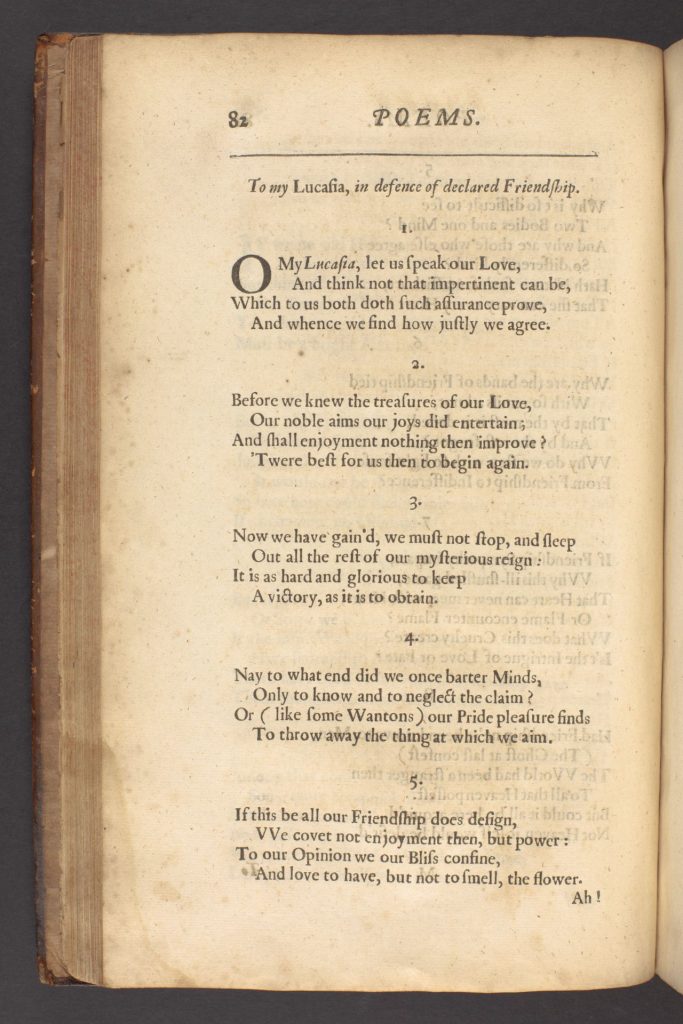
First page of “To my Lucasia”
1.
O My Lucasia, let us speak of our Love,
And think not that impertinent can be,
Which to us both doth such assurance prove,
And whence we find how justly we agree.
2.
Before we knew the treasures of our Love,
Our noble aims our joys did entertain;
And shall enjoyment nothing then improve?
‘Twere best for us then to begin again.
The debate on whether Philips’s work should be read as such points to the difficulty of applying modern notions of sexuality and sexual identity to historical authors.

Author portrait from A narrative of the life of Mrs Charlotte Charke.
Charlotte Charke (1713–60) lived and worked as a man for much of her life, defying some of the career limitations for women in eighteenth-century England. Her autobiography A narrative of the life of Mrs Charlotte Charke … Her adventures in men’s cloaths records her experiences. To contemporaries she was notorious, but her works in our collections have received little attention until recently.
We use she/her pronouns when describing her as those are the pronouns she used to describe herself.

Title page of Charke’s autobiography “Written by Herself”.
Charke acted on the stage in male roles, ran a puppet theatre staging political satire and worked in the traditionally male jobs of a gentleman’s valet and a farmer. Unfortunately she paid a price for doing so: frequently short of money, she was estranged from her father and two husbands, against whose affairs and gambling debts she rebelled. Only towards the end of her life, as a writer, did she find success with this book, an early example of a published autobiography written by a woman. We might be tempted to apply anachronistic terms of gender identity to Charke, but the survival of her autobiography at least enables us to read about her life in her own words.
During the eighteenth century, English guidebooks claiming to describe the dangerous temptations of London life to the innocent and respectable reader became popular. They enabled a vicarious exploration of illicit or unconventional sexual behaviour and gender that did not endanger either author or reader. The midnight spy … exhibiting .. bagnios, jelly houses .. and other places of midnight resort, focusing on London’s nightlife, includes an account of jelly houses and bagnios – restaurants and bathhouses that served as brothels where men could pick up both women and other men for sex, although the text does not clarify whether it describes homosexual or heterosexual activity.

Frontispiece of The Midnight Spy
Publications of this sort sold well and critical reviews from 1766 mention that passages of this book had been re-used from previous similar titles. Such comments suggest that this may not have been the most up-to-date account of London nightlife during time of rapid change in the capital as the Industrial Revolution began.
These items were indentified by Isobel Goodman (2021 Liberating the Collections volunteer), Chris Fripp (Liberating the
Collections pilot-project researcher 2019–20), and Michael Niedzwiecki (2022 Liberating the Collections volunteer). Thanks to their work, we can highlight these items and ensure they are no longer hidden on our shelves and in our catalogue.
If you would like to see these items for yourself, they are on display in the Main Library until December 2023.
Anthony Davis Book Collecting Prize: Interview with LSE Library
By Ching Laam Mok, on 24 May 2023
At UCL Special Collections, we look after collections that, as a whole, tell a larger story about our shared history and culture. Some items may have a high monetary value, but many like the 1970s workbooks preserved in our Baines Archive, collectively help us understand the history of education.
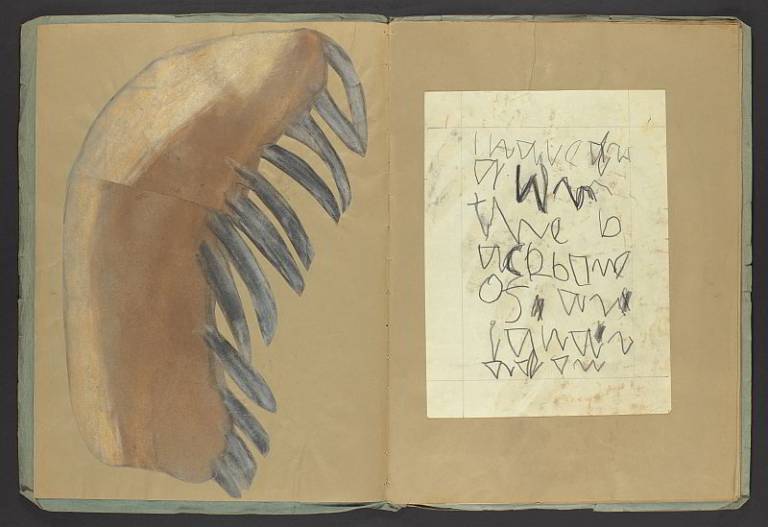
‘Book of Bones’ from our Baines Archive.
Preserving history doesn’t depend on past collectors. Student Book Collectors play an important role in capturing a snapshot of history. Collections like the 2020 winner “Books that Built a Zoo” allow us to understand the intersection between children’s literature and animal conservation. “Read my Genders: A Trans for Trans Collection” captures the voices of modern-day transgender writers and advocates.
But you don’t just have to take our word for it. Chelsea Collison, Learning and Engagement Officer at LSE Library, has written about her favourite collection and how it helps her better understand history.
Tell us a bit about yourself!
I’m the Learning and Engagement Officer at the London School of Economics Library where I work closely with the curators to tell the stories of the collections to a wider audience. I do this via workshops schools and public events for university students and beyond. I specialise in using learning outside of the classroom to increase public awareness, appreciation, and curiosity for heritage, history, and nature.
Outside of work, I enjoy exploring the outdoors whether in the urban parks within London or further afield during travels outside the city. Growing up in Florida, I spent my formative years playing in the waves on the eastern coast, hiking through swamps and tree canopies, or paddling around the crystal blue springs. These memories along with an early job as an educator at a natural history museum have developed a deep feeling of awe and wonder for nature in all its forms.

Chelsea Collison, Learning and Engagement Officer at LSE Library is looking at collection items.
If you were applying for the Anthony Davis Book Collection, what would you submit?
If I were applying for the Anthony Davis Book Collection the theme would be women in natural history. In what has historically been a male dominated field, it’s important to learn about the women who have contributed to biodiversity sciences despite the many social and cultural barriers they were up against. Examples includes works by Mary Anning, Rachel Carson, and Maria Sibylla Merian (to name just a few!). I have a particular interest in scientific illustration as I’m always impressed by the level of observation skills and detail required for creating something that is scientifically accurate and not just pretty. Of course, I also enjoy these works because they are also beautiful and serve as inspiration for my own artwork! Although natural history is not something that is a specialty for LSE, there are still some gems on this topic to be found within The Women’s Library collections! Some other examples can be found on the Biodiversity Heritage Library Flickr page.

Chelsea would submit a collection of women in natural history if she was applying for the book collecting prize.
How do you choose what to add to your collection?
I would want to build a collection that would represent a wide range of ecological biodiversity within the books and illustrations (botany, mycology, entomology, etc.) but also a diversity of the women represented. I would place special interest in books that highlight geographical areas that are special to me including Florida, and now England, which have both experienced high levels of environmental degradation meaning many of species represented in older books and illustrations may now be extinct.

One of the items Chelsea picked.
What does this collection mean to you?
To me, this collection would tell two hidden stories, one of people and one of place. The story of people would highlight the often forgotten or unknown women of science and their important contributions to the field. The story of place would highlight impacts of environmental degradation and climate change by showcasing illustrations of species that no longer exist in these places we have come to call home.
Thank you very much to Chelsea for talking to us! If you’d like to learn more about LSE’s Library collection, visit their website.
If you have a collection of books, postcards, leaflets or other print items that tells an important story to you or a subject your passionate about, consider applying for the Anthony Davis Book Prize! Details of how to apply, and more examples of other books collections, are available on our blog.
Royal History: A close look at George VI’s Coronation Programme
By Sarah S Pipkin, on 5 May 2023
Colin Penman, Head of UCL Records, writes about a newly uncovered item in the UCL Records collection.
In the timely way that these things can happen, I recently came across an official souvenir programme for the coronation of King George VI and Queen Elizabeth in May 1937:

As this is the last time there was a coronation of a king and a queen consort –Charles III’s grandfather and grandmother – it has been interesting to compare the occasion with Saturday’s event. The procession and liturgy are very similar, these things changing little over time. There will be new music and prayers, and the much-publicised ‘Homage of the People’. But some elements of the ceremony date back to before the Norman Conquest, for example the Presentation, when the king is ‘presented’ to the four points of the compass.
The programme itself is quite a lovely thing, a lavish 36 page quarto booklet with decorative embossed card covers, glassine protective sheets, and nice watered-silk end papers. It seems to be bound with cord rather than staples – you can see it here at the centre pages, which show the route of the procession:

Interestingly, on the right hand side, just above the compass, is the ‘Site of New Waterloo Bridge’, not completed until the middle of the Second World War, largely with women’s labour. We can compare this route with a London Transport map which can be found in the Gaitskell papers in Special Collections, showing the route of Queen Elizabeth II’s procession in 1953:

GAITSKELL/G/MISCELLANEOUS PAMPHLETS AND OTHER PAPERS
Not much between them. King Charles, on the other hand, will simply travel up Whitehall and down the Mall to get back to Buckingham Palace:

Image from gov.uk
The programme for George VI’s coronation includes a coloured, embossed title page:

and another showing the emblems of the king’s Dominions, which definitely wouldn’t look so crowded in today’s equivalent:

This is followed by a poem by the Poet Laureate, John Masefield, very much of its time: ‘Make wise the councils of the men who sway / The Britain here, the Britains far away’. There is also an interesting essay on the ceremony itself by the Garter King of Arms, the full order of service, and a genealogical table showing the king’s descent from William the Conqueror. The latter can’t compete for splendour with UCL’s own MS ANGL/3, a giant 15th century roll, 10 feet long, showing the supposed lineage of the kings of England all the way back to Adam – you can see a video about MS ANGL/3 online. However, the lineage in George VI’s programme is presumably more accurate.
I don’t know how or why we ended up with this item. It was found in a box of uncatalogued College archive material, where it obviously doesn’t belong. It’s accompanied by a card from the Vicar of St Peter, Vere Street, and a copy of his sermon, so perhaps there’s a clue there:

I have no information so far on Minos Devine, but hope to find a connection to one of our existing collections. If not, this will be an interesting addition to our London History collection.
UCL Early Modern Judaica to form Module of Early European Books (“EEB”) Online
By Tabitha Tuckett, on 3 May 2023
This post was written by Caroline Kimbell, Joint Head Of Commercial Digitisation And Licensing at UCL Library Services
Following the digitisation of UCL’s 18th century treasures (currently in production) we turn next to a new module for ProQuest’s Early European Books, comprising 515 works of Judaica, roughly half in Hebrew, half in other European languages.
UCL’s Jewish collections are of national significance, and the majority of this project is drawn from the Mocatta collection. Books and pamphlets published before 1700 are in scope, and include 10 Incunabula, the oldest from 1470. EEB to date only includes 164 Hebrew books, but aspires to provide a comprehensive Jewish history resource.
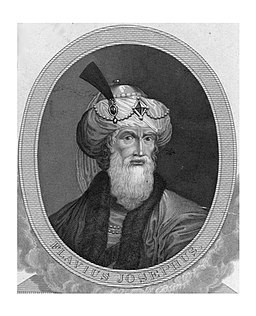
Portrait of Joesphus Flavius. Artist unknown (18th Century). https://www.bildarchivaustria.at/Pages/ImageDetail.aspx?p_iBildID=7956120
Our contribution includes works in 10 languages besides Hebrew, including Catalan, German, Aramaic, Italian and Greek alongside English. The places of publication represented reflect early modern Jewish Europe, with major centres in Amsterdam, Venice, Antwerp, Prague, Krakow, Berlin, Geneva, Salonika and Istanbul. The module is heavy on hefty, high-status books, many bearing elaborate metal clasps and fine bindings. There is, inevitably, an emphasis on religious texts – Torahs, Psalms and lamentations, prayers, religious and ritual works, theological commentary and Jewish history. 50 works by first century Roman-Jewish historian Flavius Josephus are included, and the module will therefore represent early modern Judaism from the inside.
However, inevitably, much of the collection represents the Christian world’s responses to Judaism. From 1656 we find “A view of the Jewish religion: containing the manner of life, rites, ceremonies and customes of the Jewish nation throughout the World at this present time”, a French “Histoire des Tvrks et d’un Juif; avec discovrs de l’entier banissment des Juifs du Royaume” and an account from 1655 of “a great council of Jews assembled in the plain of Ageda in Hungaria”. There is widespread fascination with Jewish daily life – one account from 1656 promises to describe “their doings at night when they come home”.
In 17th century London, as today, sensational language drove book sales – epitomised in one title – “wonderful and deplorable”. In this vein, we find “the Counterfiet Jew” assuring readers that “It would fill to much paper to describe all the lyes, forgeries, hypocrisies and slights of this miserable wretch”. There are many individual conversion narratives – most famously those of Eve Cohan and Theodore John, the latter baptised at the German Lutheran church in Little Trinity Lane – just one sign that London has always been a Global City. Pamphleteers skirmish back and forth on the subjects of naturalisation, conversion and protestant conformity: one Mocatta pamphlet from 1693 recounts an atheist “apostized from the Christian religion [who] died in despair”.
Writers and readers were also fascinated by cabalistic practice, Jewish medicine, magic and folklore. In MOCATTA 1666 L4 we find an account of “how the Persians were strucken with blindness, when they attempted to rifle the houses of the Jews and spoyle their goods”. In 1653, we find Robert Filmer explaining “the difference between an English and Hebrew vvitch” (always handy to know) and from Cornwall, the story of “Ann Jeffries… who was fed for six months by a small sort of airy people called fairies”.

Interior of a synagogue. By a follower of Gerrit de Wet (1616-74). National Museum in Warsaw ID: 505633
English travel narratives from Europe and the near East tend decidedly to the picaresque – from 1699 we find “Two journeys to Jerusalem. : Containing… a strange and true account of the travels of two English pilgrims… and what admirable accidents befel them in their journey to Jerusalem, Cairo, Alexandria… beautified with pictures.” Other descriptions cover the Caucasus, the Tartar mountains, Morocco (“The present state of the Jews… in Barbary”) and recount the miraculous raising of the dead by Nathan the Prophet, earnestly evidenced as “the true copy of a letter sent to the East-India Company”. More sober accounts of the pan-European world of trade and business include, at MOCATTA 1678 M1, letters between merchants in London and Amsterdam.
Evidencing everyday co-existence and mutual curiosity, many books here navigate between languages and cultures – there are bi-lingual dictionaries and Henry Care’s invaluable “The Jewish calendar explained” from 1673. Many of the works here use the Jewish calendar: 316 equates to 1556, 448 to 1688 for example. Date formats and the right-to-left pagination of Hebrew books pose particular challenges for digitisation and on-screen navigation, but contributing a dedicated Judaica module to such a reputable, international online resource as EEB will enhance UCL’s global reputation for Jewish studies. UCL library users already enjoy access to EEB, and the collection will be available from launch in 2024. For more information on the Mocatta collection, which supplies the majority of content for this project, see the Hebrew and Jewish Rare Books webpage.
Call for Papers: Creative Responses to the History of Covid-19
By Nazlin Bhimani, on 26 April 2023
UCL Press’s Paper Trails: The Social Life of Archives and Collections and the University of Stirling’s Oral History of the Pandemic Project are pleased to invite contributions on the broad theme of Creative Responses to the History of Covid-19. Since 2021, researchers at Stirling have been interviewing the University’s staff and students about their experiences of the Covid-19 pandemic. Inspired by the playful approaches of ‘creative history’, the researchers at Stirling have now produced a highly innovative history based on their oral interviews. Co-produced by academics, archival staff, curators, and students, with creative input from artists and musicians from the Royal Conservatoire of Scotland, this history will be presented on Paper Trails in the form of written text, film, animation, and music.
The editors of Paper Trails – a collaborative, peer-reviewed, open-access BOOC – now invite researchers from across the higher education, archive, and museum sectors to submit new proposals for additional contributions to a special edition on Creative Responses to the History of Covid-19. In addition to the Stirling history, this edition will showcase the diverse ways in which these sectors experienced, recorded, and interpreted the early stages of the Covid-19 pandemic.
The deadline for proposals is 19th June 2023, and the deadline for submissions will be 20th October 2023. Contributions may be submitted to the following streams and can be in a variety of formats and lengths:
- Research Stories: full-length research articles.
- Co-Production: outputs from projects in which non-academic, undergraduate, and postgraduate audiences collaborate with others to create new work based on research collections.
- Collection Profiles: shorter, descriptive or narrative pieces that highlight collections of interest.
- Engagement: Reflective pieces that focus on a broad range of engagement activities.
Paper Trails is edited by Andrew Smith, Director of Liberal Arts, Queen Mary University of London, a.w.m.smith@qmul.ac.uk. The University of Stirling Oral History of the Pandemic Project team is led by Stephen Bowman (Lecturer in History, stephen.bowman@stir.ac.uk), Rosie Al-Mulla (Archivist, rosie.al-mulla@stir.ac.uk), and Sarah Bromage (Head of University of Stirling Collections, sarah.bromage@stir.ac.uk).
Hidden in Plain Sight: Why Liberating our Collections matters
By Sarah S Pipkin, on 20 April 2023
The following is by Rozz Evans, Head of Collection Strategy and co-chair of the Library Liberating the Collections Steering Group. It was originally published in the introduction to our 2023 Exhibition Catalogue “Hidden in Plain Sight: Liberating our Library Collections” and has been slightly edited for the purposes of the blog.
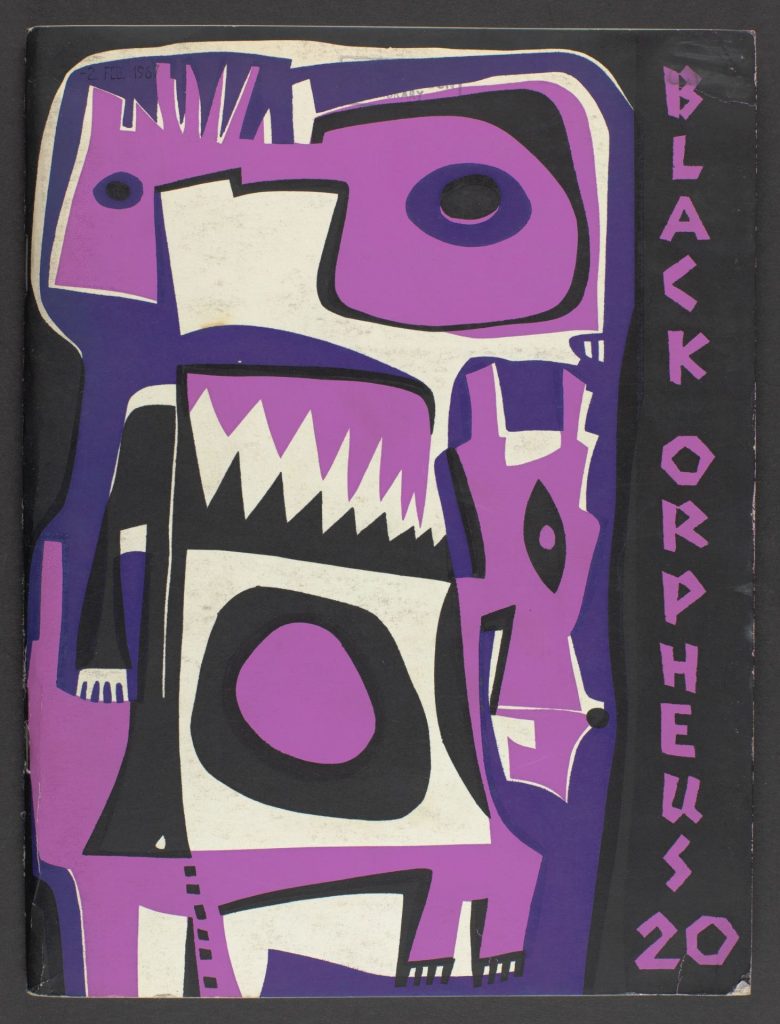
Black Orpehus 20, part of the 2023 Main Library Exhibition
UCL Library Services holds a rich and diverse range of collections containing almost two million printed items (alongside an extensive digital library). These collections comprise both Special Collections (a term that we use broadly to describe our rare books, archives and records) and Teaching Collections. As Head of Collection Strategy, I work closely with our Head of Special Collections, Sarah Aitchison. We are responsible not only for the development, care and curation of our collections, but also for ensuring that we prioritise our effort and resources in the form of money, staff and space. An important aspect of this is our commitment to uncovering the hugely diverse material within our existing collections, enabling us to give a voice to those who have been historically less visible.
As an institution, UCL has been very public about its commitment to addressing issues around Equality, Diversity and Inclusion (EDI) for some years. Arguably the most high-profile work has been around eugenics, UCL’s part in its history and its enduring impact.
However, institutional effort goes far wider than this. For example, UCL was one of the first institutions in the UK to set up its Liberating the Curriculum project in 2016 to improve the inclusivity and diversity of its reading lists. One of the outcomes of this was a community of practice, bringing together colleagues from across the university who are working in this area; this now has a broader remit than the original project.

“Early Efforts by the Misses Moss”
It is this group that inspired the name of our Library Liberating the Collections Steering Group (LLTC), which we set up in July 2020 to plan, monitor and oversee our work in this area. We have developed an action plan based around three key themes of Description and Visibility, Collection Policy and Communication and Engagement.
‘Liberating’ is a term that already has currency in UCL and beyond. It conveys an active approach to this work and its broadness demonstrates how this group is working to uncover, identify and promote a more inclusive collection in relation to all under-represented voices. This means that although there will be specific projects in the realm of decolonisation, for example, the remit is broader than race and racism. We feel strongly that it is important not to use terminology such as decolonisation as a shorthand for wider issues around diversity and inclusion.
UCL Library Services’ collections were initially built from departmental libraries, gifts, donations and bequests, supplemented by some purchases. In the library’s earliest accessions registers it is clear that the focus was on generating teaching collections and filling shelves. This meant that there was no strategic approach to developing a collection, and therefore was primarily reflective of the status of donors. This is very different to how we acquire material today. This involves a much more selective, considered and proactive process, governed by clear and transparent collection policies that are available on our website.

Our newly reclassified copy of “The New Tribe”
This also means that in some cases – particularly in our older material – our collections tend to reflect historic bias and structural inequalities in the university and in the society of the time. These include a normalisation of white, male, Western-centric theories, views, experiences and opinions. This certainly does not mean that we do not hold material which relates to under-represented authors and communities. However, it has become apparent that many of the systems and processes traditionally used by libraries in the curation, management and description of the collections serve to perpetuate systemic bias and can make it difficult to discover this material. For example, the widespread adoption of international cataloguing standards, such as Library of Congress Subject Headings, makes it difficult to challenge or change the use of outdated or discriminatory language in catalogue records.
We are also aware that our collections include content that is now considered discriminatory or harmful, and we must be explicit that its existence in our collections does not represent UCL’s current views.
Traditionally libraries have hidden behind ‘neutrality’ as a way of preserving objectionable content without proper contextualisation, regardless of the harm it can cause to our academic and cultural understanding of these items. However, their historical importance means that we cannot simply remove or delete such items from our collections. Instead we are looking at how we can contextualise such material, acknowledging where necessary the harm these items might do to some of our users and alerting them to problematic content where we can. Pairing re-contextualisation with a celebration of previously ignored voices allows us to have a fuller understanding of our history and culture.
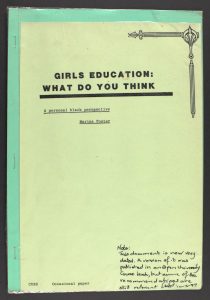
“Girls Education: What do you think?”, part of the Mariana Foster archives collection
Working in this space tends to require a lot of background research and reflection before any work can begin, much less before the books and other materials are made available for use. “Hidden in Plain Sight” does not represent a finished project, but sets the scene for ongoing investigation, discovery and promotion. Staff and volunteers have been working for many months or years, and this will continue to be the case. In the next few years we hope that more of our collections – already full of interesting stories, diverse voices and differing perspectives on colonialism – will be accessible to students, staff and researchers. “Hidden in Plain Sight” is thus a teaser of things to come.
We hope that this exhibition also embodies a spirit of hope and excitement, as well as an ongoing commitment to ensuring that UCL Library’s collections are truly reflective of the richness and diversity of our shared history.
For more information on the history of UCL Library Services, check out our 2019 Exhibition catalogue “From Small Library Beginnings: a brief history of UCL Library Services.”
“Hidden in Plain Sight: Liberating our Collections” is on display in the Main Library Stairwell and 1st floor until December 2023. Exhibition items and catalogue are also available online.
Applications for the 2023 Anthony Davis Book Prize are now open!
By Sarah S Pipkin, on 19 April 2023
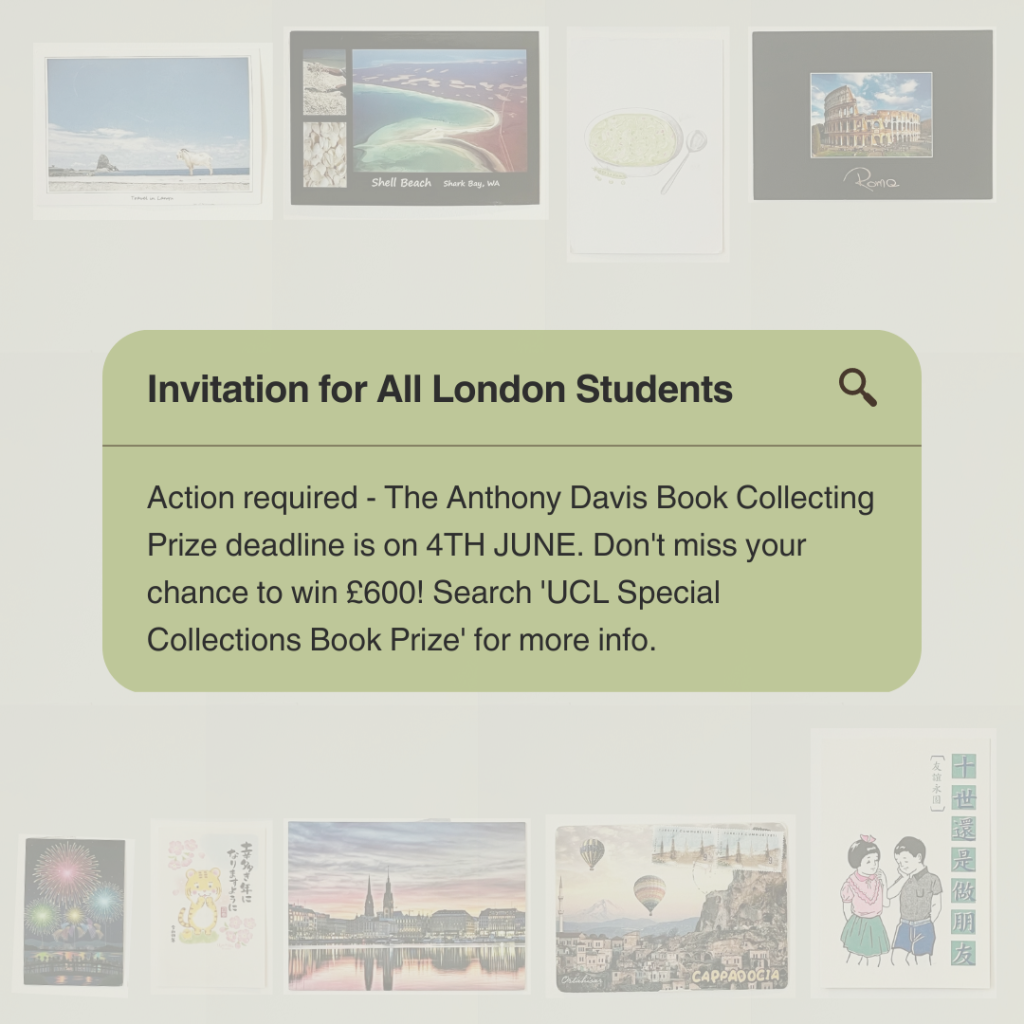
The Anthony Davis Book Prize is open to any student studying at a London-based university who has a coherent collection of printed and/or manuscript material. The winner will receive £600 as well as an allowance of £300 to purchase an item for UCL Special Collections and the opportunity to give a talk on their collection as part of the UCL Special Collections events programme.

Items from the collection of 2022 winner Hannah Swan
The collection should be based around a common theme which has been deliberately assembled and that the collector intends to continue growing. However, the items in the collection do not have to be valuable or historically important – anyone who collects items from comic books, to postcards, to modern publications is welcome to apply!

Books from Daniel Haynes’ collection, the 2021 winner
The prize is intended to encourage the collecting of books, printed and manuscript materials by students by recognising a collection formed by a London student at an early stage in their collecting career. All current undergraduates and postgraduates studying for a degree at a London-based University, both part-time and full-time, are eligible to enter for the prize.
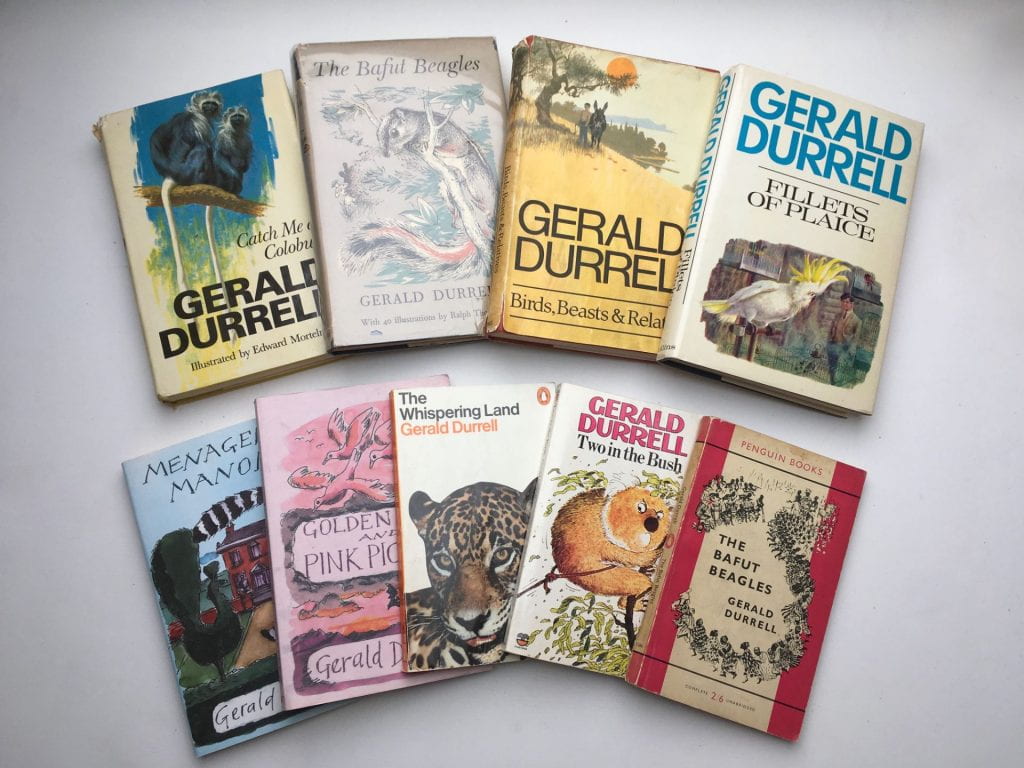
Books from Alexandra Plane’s 2020 winning collection
For more information:
To apply or to learn more about the eligibility criteria:
For advice on what a collection can look like:
- How to be a student book collector (and apply for the Anthony Davis Book Collecting Prize)
- Anthony Davis Book Collecting Prize: Collecting with Intention
Conversations with previous winners and finalists:
- Anthony Davis Book Collecting Prize: Books that built a zoo
- Bound to read: collecting Victorian texts in 20th-century bindings from Bookish: The Birkbeck Library Blog
- Q&A with Erick Jackaman, 2021 Anthony Davis Book Collecting Prize Runner Up
- Florilegium: gathering the language of flowers from Bookish: The Birkbeck Library Blog
Announcements of previous winners:
- Results announced for Anthony Davis Book Collecting Prize 2020
- Announcing the winners of the 2021 Anthony Davis Book Collecting Prize
- Anthony Davis Book Collecting Prize 2022: results announced
Keep an eye out for future blog posts on what book collecting can look like!
We look forward to seeing your book collection!
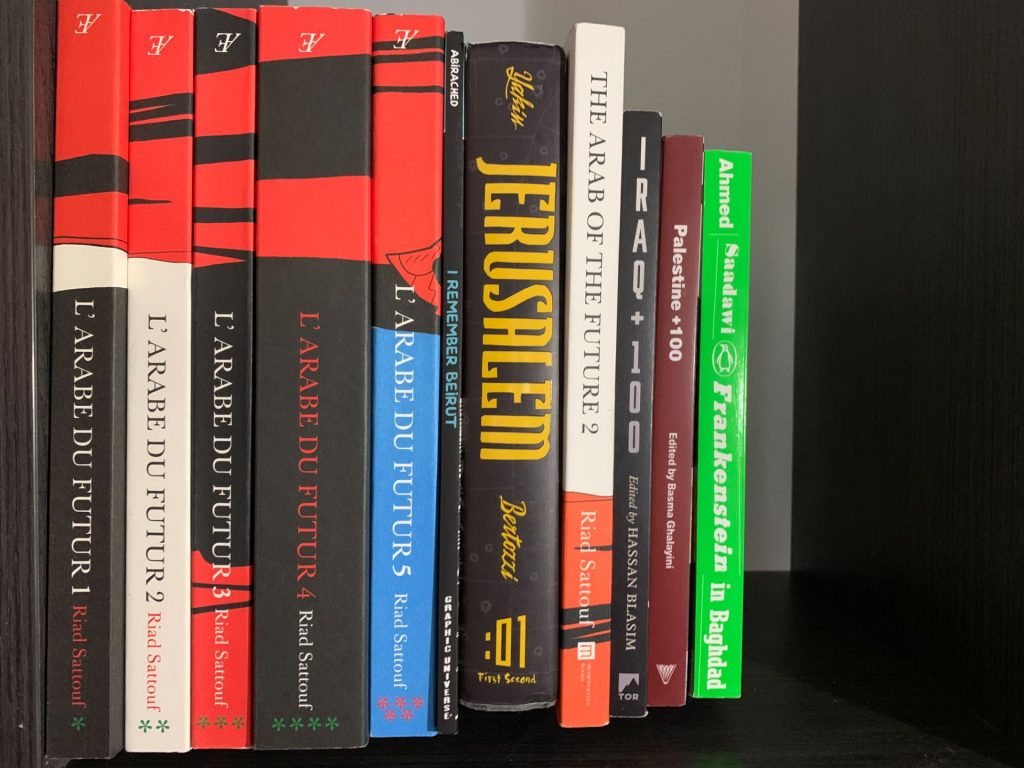
Items from 2022 finalist Jessie Maier’s collection ‘
New Exhibition: Hidden in Plain Sight
By Sarah S Pipkin, on 30 March 2023
Our new Main Library exhibition “Hidden in Plain Sight: Liberating our Library Collections” is now open! The exhibition is free and open to members of the public.
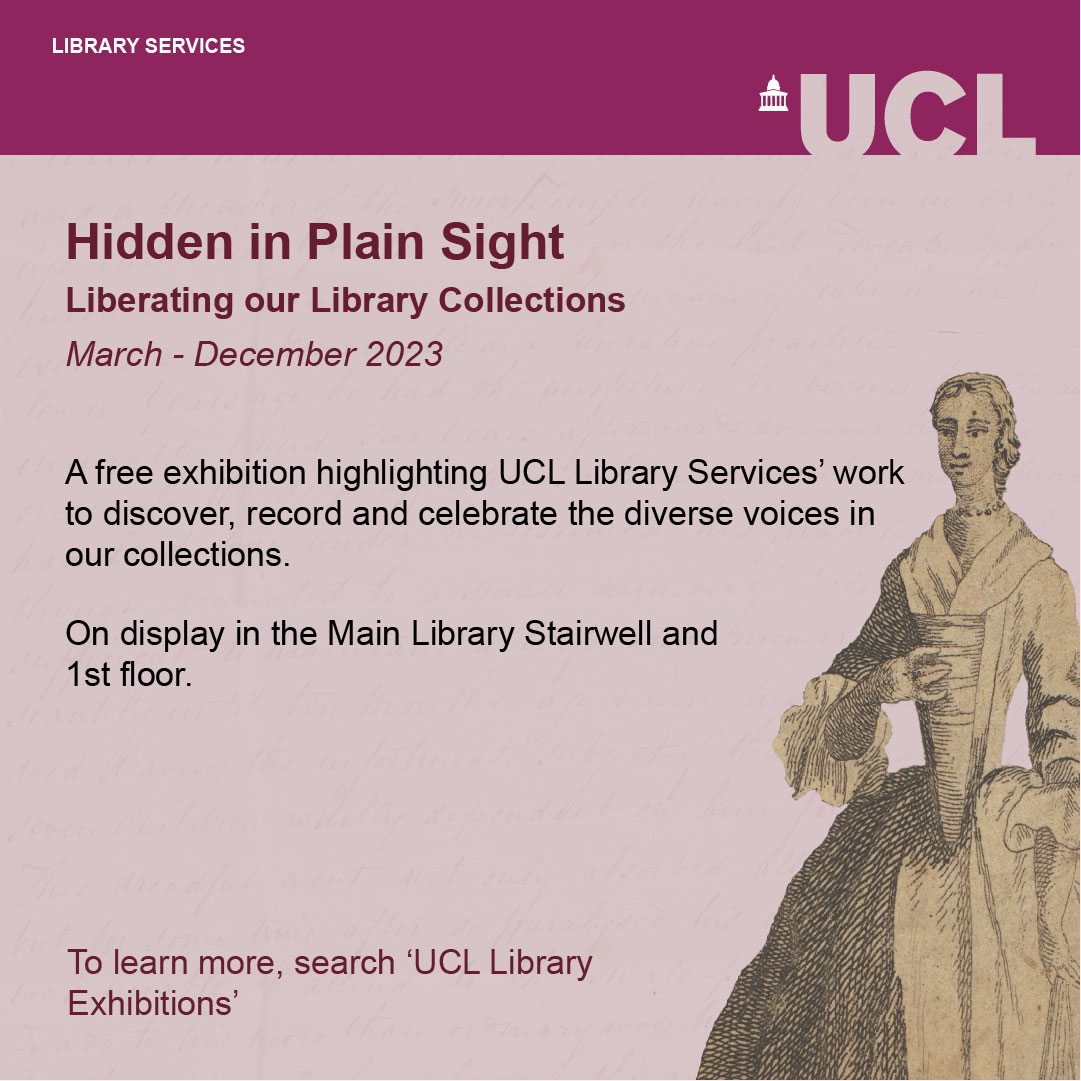
Across UCL Library Services, staff members, students and volunteers have been working together to discover, record and celebrate the diverse voices in our collections. Through a number of projects, overseen by the Library Liberating the Collections Steering Group, we have gained a better understanding of our collections and improved their accessibility. However, we are at the early stages of this important initiative and there is still more work to be done.
The exhibition is located in the Main Library Staircase and First Floor. It is open to the public – just speak to a member of the Main Library front desk about getting a 15 minute pass to see the exhibition.
A catalogue for the exhibition is available online.
Items in the exhibition have also been digitised.

Early Modern Women and Printing
By Sarah S Pipkin, on 8 March 2023
The following was adapted from text written by Erika Delbecque and Tabitha Tuckett for the 2023 exhibition catalogue Hidden in Plain Sight: Liberating our Library Collections, which will be available online at the end of March. The Main Library exhibition Hidden in Plain Sight will also be opening at the end of March. Keep an eye out for an opening date announcement coming soon!
Often when we look at books in our collection, our preconceived notions about the historical roles of women in society can cause us to make assumptions about the history of an item. After all, what could the collected works of Francis Bacon, a former Lord High Chancellor of England, tell us about the working lives of women in 17th century England?
When you first open the 1657 edition of Resuscitatio your eye is almost immediately drawn to the full-page engraved portrait of Francis Bacon. However, this book is part of the long history of women’s involvement in book production.

Portrait of Bacon from Resuscitatio
In early modern England, printing was mostly the preserve of men. However, widows were permitted to take over their late husbands’ printing businesses, which allowed many women a way into this profession. One of these women was Sarah Griffin, who was active as a printer from 1653 to 1673. We can see her involvement in the production of the 1657 edition of Resusciatio by taking a closer look at the title page.

Title page of Resuscitatio (STRONG ROOM OGDEN A QUARTO 329)
The bottom of the title page for Resuscitatio reads: “LONDON, Printed by Sarah Griffin, for William Lee, and are to be sold at his Shop in Fleetsstreet, at the sign of the Turks-head, near the Mitre Tavern, 1657.”

Publishing information for Resuscitatio
Sarah Griffin inherited the printing business from her husband Edward in 1652 and ran it successfully for the next 20 years. We have several books printed by Sarah Griffin in our collection, including her edition of Resuscitatio.
Hannah Allen was another example of a woman who acquired a business on her husband Benjamin’s death in 1632. While it is unclear how long she was involved in publishing, from 1646-1651 Allen published at least 54 books and pamphlets. Her business specialised in religious treatises, such as The hope of Israel. It is an English translation of a work by Menasseh ben Israel, who set up the first Hebrew printing press in Amsterdam.
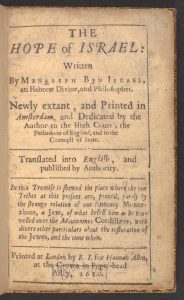
Title page for The hope of Israel (STRONG ROOM MOCATTA 1650 M1 (5))
Like the 1657 edition of Resuscitatio, a quick glance at The hope of Israel does not reveal an obvious connection to women-owned businesses. However, the bottom of the title page reads: “Printed at London by R.I. for Hannah Allen, at the Crown in Popes-head Alley, 1650.”

Publisher information for The hope of Israel
Our collection includes The hope of Israel and the 1648 pamphlet The humble ansvver of the General Councel of the Officers of the Arm.
Both of these items were identified as part of the Rare Books Liberating the Collections volunteer project, which equipped participants with the knowledge and tools to search our catalogue for items in our rare book collections relating to under-represented groups. Twenty-seven volunteers have worked with us, each focusing on a particular topic, such as books owned by women, authors of colour and representations of disability. Without the work of these volunteers, we may have never realised that Resuscitatio and The hope of Israel were part of the history of women in publishing and printing.
Both of these items were identified by Emilia Reid, a 2021 and 2022 Rare Books Liberating the Collections volunteer.
‘The first stone’: 197 years of UCL
By Sarah S Pipkin, on 8 February 2023
Leah Johnston, Cataloguing Archivist (Records), explores documents in the College Archives relating to the history of UCL’s Wilkins Building
We are fast approaching UCL’s bicentenary in 2026 and much of its almost 200-year history is recorded within the documents, plans, drawings, photographs, and ephemera of UCL’s College Archive. The archive spans the period from its establishment in 1824, to the present day, and covers everything from founding deeds to student magazines, along with Council minutes, student registers and files, correspondence, and publications about the university.
As UCL Record’s Cataloguing Archivist, it is currently my job to catalogue some of the many collections we hold. I have recently begun work on the College Correspondence, which covers a variety of matters relating to the early administration of the university between 1825-1890. Although most of this collection has already been processed there are still around 200 letters left to be documented. The collection is often used by UCL’s Records’ team to answer enquiries about the early history of the university so it is important that we know what each letter relates to and where it can be found within the 164 boxes in which they are all stored.
While working on a folder of correspondence from 1827 I came across several letters from the architect, Sir William Wilkins who designed UCL’s Wilkins Building. In 1826 he entered a competition set by the Council to submit a design for the emerging university’s main building. Architects submitted their designs in March 1826 and after much deliberation Wilkins’ design was chosen. As noted by Dr Amy Spencer in her lecture ‘The beginnings of UCL in Bloomsbury: some parallels with UCL East’, this was mainly due to the fact that it offered the largest square-footage for the lowest estimate.



UCLCA/CORR/3076: Letter from William Wilkins to the Council, dated 17 February 1827, requesting that they delay setting the first stone.
In this letter dated 17 February 1827, Wilkins requests that the ceremony of the setting of the first stone be postponed for another month. It seems that due to a hard frost at the time Wilkins believed it would be nearly impossible to break ground and he urged the Council to reconsider the intended date.
Other collections within the College Archive include drawings, plans and photographs of the Wilkins building from its inception in 1826 until the present day, allowing us to trace its history through the decades.

College Collection I 16C: West Front of the University of London, 1828
This print shows how the building would have looked upon its opening in October 1828. Although Wilkins’ estimate was relatively low the university struggled to secure the required funds and as a result the two wings of the building were unable to be built. It wouldn’t be for another 158 years until the building’s quadrangle was completed in 1985, an occasion marked by a visit of Queen Elizabeth II.

The Queen is pictured during a visit to UCL in 1985 to mark the official completion of the Main Quad.

College Collection X 65: William Monk’s etching of the Wilkins’ Building Portico (c.1900-1920)
Over the years the building has become a well-known landmark of the Bloomsbury area and has been reproduced in drawings, paintings, and later photographs. This print is a copy of an etching by the Victorian artist William Monk and shows the distinctive 10 column Portico some time at the start of the 20th century.

UCL Front Quad and Portico at Night. November 2008. © UCL Media Services – University College London
In contrast this image taken by UCL Media Services team in November 2008 shows the same aspect portrayed in Monk’s engraving. Although the images are almost a century apart the Wilkins Building has remained almost unchanged.
To explore more of the history of UCL’s campus check out our Digital Collections page.
Kelmscott School historians present a History of London – a digital exhibition with Special Collections
By Anna R Fineman, on 31 January 2023

Kelmscott School students viewing William Faden’s map of the River Thames and surrounds (1799) from UCL Special Collections, at One Pool Street, UCL East.
Last term the Outreach team of UCL Special Collections were delighted to collaborate with Year 9 History enthusiasts at Kelmscott School in Waltham Forest. The club, called Becoming an Historian, took place over six weekly after-school sessions. Students defined the skills and qualities which make a good historian, learnt how to undertake historical research of primary resources, and each explored an item from UCL Special Collections in-depth. They chose the History of London as their theme and have produced informative and dynamic museum labels presented in this mini digital exhibition. You can also read their personal responses to the collection items on Twitter. The students each gained different things from participating in the club, as these three examples attest:
My favourite thing about the club is the amount of discussion we have. An opportunity to speak out your thoughts freely was very encouraging.
I liked getting to know more about how research is conducted.
My favourite thing about the club was the opportunity to work with others on a subject that I am passionate about.
To conclude the club, the students came to visit UCL East on 30 January 2023 – the very first school group through the doors of One Pool Street! Supported by the Outreach team, the students were thrilled to experience the original historical items they had been researching – having worked from facsimiles until that point. One student observed:
‘It was interesting to see the details on the real-life item, as it was much more intricate than online.’
While another commented:
‘I was surprised seeing the actual item and the actual text. It was great!’
UCL Special Collections say a huge thank you to the students for undertaking this research and for helping to tell the stories of these extraordinary rare books and archives in our care.
Living London, Volume 1, Ed. George R. Sims (1902)
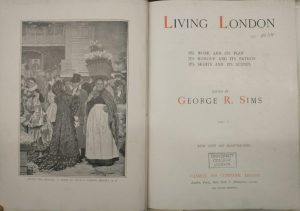
A double page spread of the rare book Living London by George R. Sims (1902).
Living London was written in 1902 by George R. Sims. It describes scenes of people looking for work in the London Docklands. At the time of writing, Britain was plagued by a deep class divide; upper classes saw themselves as superior to the working class. The mixing of different classes was frowned upon. Sims himself was the son of a successful merchant. Through the medium of the book Sims disparages those looking for work in the docks by describing them as ‘the common slum type, either criminal or loafer or both.’
Zahra
The several plans and drawings referred to in the second report from the select committee upon the improvement of the Port of London, illustrated by R. Metcalf, William Faden (1799)

A plan of the River Thames and surrounds, for ‘the improvement of the Port of London’, illustrated by R. Metcalf and published by William Faden (1799).
William Faden (1749-1836) was a British cartographer. He was so well known that he was the royal geographer for King George III. This meant that he had to publish and supply maps to the royals and parliament. The map shows a detailed view of London.
Musa
William Faden was a British cartographer and a publisher of maps. He was born on July 11 1749 and died on March 21 1836. He self-printed the North American Atlas in 1777 and it became the most important atlas chronicling the revolution’s battles. He also made this map of the River Thames which gives a lot of information about the way buildings were placed, and the trading docks that held the actual trading ships used back in the day.
Petar
Letter from the Trades Advisory Council regarding wartime food regulations in relation to the baking of challah (1945)
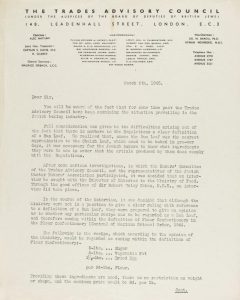
The first page of a letter from the Trades Advisory Council regarding wartime food regulations in relation to the baking of challah (1945).
This letter by the Trades Advisory Council was drafted in the 1930s and reconstituted in the 1940s to prevent growing hostility towards the Jewish population from British fascists. In this letter it states that the Jewish challah loaf was very similar to the bun loaf, and would be placed in the same category as it. It goes on to state that the ingredients for it should be rationed for the best of the British people.
Ahrab
The Trades Advisory Council was created in the 1930s and reconstituted in 1940 to challenge the British fascists. Because the Jewish bread challah is extremely similar to bun loaf, which was rationed, the council decided to add it to the same category as the bun loaf, saying that every British citizen was to put the nation first.
Lu’Ay
Vagabondiana : or, anecdotes of mendicant wanderers through the streets of London; with portraits of the most remarkable drawn from life, John Thomas Smith (1814)
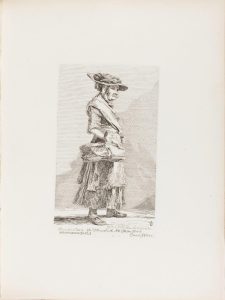
An illustration of a woman, drawn from life on the streets of London, from Vagabondiana by John Thomas Smith (1814).
This is a book written and illustrated by John Thomas Smith. It was published in 1813 and made from paper with printings of paintings. The author was born in 1766 inside a Hackney carriage. He was educated at the Royal Academy and was nicknamed ‘Antiquity.’ He attempted to become an actor, and then a sculptor. His eventual occupations were engraver, draughtsman and curator.
Ace
Metropolitan Sewers: Preliminary report on the drainage of the metropolis, John Phillips (1849)

The first page of Metropolitan Sewers: Preliminary report on the drainage of the metropolis, by John Phillips (1849).
Due to a combination of growing population, lack of sanitation and sewage systems, a result in the capital was several severe, contagious outbreaks of sickness, like cholera and typhoid. London’s Metropolitan Commission Sewers was established in 1848 as part of the solution to the issue. This text of 1849 describes the necessity for construction. It has plans for the running of a new sewer tunnel west to east, to transport London’s waste. The tunnel wasn’t built, but this map depicts London as far as Stratford.
Faith
East London, Walter Besant (1901)

Illustration ‘The Hooligans’ from East London by Walter Besant, 1901.
‘The Hooligans’, a picture from Walter Besant’s book East London, showcases five figures, two armed, in a dark room with an arched entrance. One man seems to be lying down in pain, possibly from an injury caused by the two armed men. In a passage below the picture it is stated that ‘the blood is very restless at seventeen.’ This could be related back to London’s notoriously high knife crime and gang violence rate, with thousands of children taking part. Despite being published in 1901 East London mirrors modern London and its violent tendencies.
Natalie
What frightens me the most were ‘The Hooligans.’ Looking at the picture alone gives me the shivers. The beaten-up man lies defeated in the hands of the hooligans. These behaviours are similar in today’s knife crime London.
Habiba
This book was published in 1901, and it was written by Walter Besant. Besant was born on August 14 1836 and died on June 9 1901. He was an English novelist and philanthropist and who wrote quite a lot of works, one of them is East London. A good enough question is why did he write East London? Besant wanted to describe the social evil in London’s East End. And in my personal opinion, in this book he wanted to show people who lived in the west and in the south how people live in the east.
Kiril
Remarks on rural scenery : with twenty etchings of cottages, from nature; and some observations and precepts relative to the pictoresque [sic], John Thomas Smith (1797)

The title page from Remarks on Rural Scenery by John Thomas Smith (1797).
The book Remarks on Rural Scenery was written in 1797 by John Thomas Smith, as the first of two items bound together. The author was also known as ‘Antiquity Smith’ and was born in 1766 in a Hackney carriage. When he left school he tried to become a sculptor, but left to study at the Royal Academy to become a painter, engraver and antiquarian. With this book he tried to bring to the mainstream the picturesque life in rural areas of England.
Viky
Common Lodging House Act, Metropolitan Police (1851)

The first page of the Common Lodging House Act by the Metropolitan Police (1851).
The industrial revolution contributed to the population growth in the nineteenth century. During the century a record number of people relocated to London. By the middle of the century areas where cheap lodging could be found grew dangerously congested. The least expensive types of lodging were common lodging houses, where residents shared rooms and frequently beds with multiple other residents. Under the 1851 Act, these homes were registered with Metropolitan Police. These regulations were a direct reaction to the inadequate conditions of crowded housing and unscrupulous landlords and recognised the risks to public health posed by disease and poor sanitation.
Maleah
The Common Lodging Housing Act, 1951, sometimes known as the Shaftesbury Act, is an Act of the Parliament of the United Kingdom. It is one of the principal British Housing Acts. It gave London boroughs the power to supervise public health regarding ‘common lodging houses’ for the poor and migratory people. This included fixing a maximum number of lodgers permitted to sleep in each house, promoting cleanliness and ventilation, providing inspection visits and ensuring segregation of the sexes. These powers were extended to local authorities in the Common Lodging Housing Act of 1851.
Malaeka and Inayah
Young people against racism in 1980s London schools
By Erika Delbecque, on 9 January 2023
This post was written by Dr Shirin Hirsch, who was one of the 2022 UCL RIC Visiting Fellows.
Bengali lives are at risk whilst they are at Morpeth – we are punched, kicked and spat on. Enough is enough.
On a Monday morning in January 1986 one hundred Bengali students walked out of their secondary school in Bethnal Green, Tower Hamlets. That weekend they had drawn up a poster calling on all children to strike with them until their demands were met. In Oxford House just off Bethnal Green Road they set up an anti-racist alternative school. Three days later, the students returned to Morpeth with the school management agreeing to their demands. The strike was partially won. Young people, in taking action on their own behalf, had forced a change in the school.
Just over a decade later, I attended the same school. Bengali students were now a large part of the student intake and the school had new management. There were brief institutional histories given on dark days when fascists had attempted to organise and build their ranks inside the school. Then a new head teacher was brought in and it was said that he had transformed the school, later knighted for his efforts. But nowhere in these official histories were the actions of the students themselves remembered. Years later, when I stumbled upon a news report covering the strike, I was full of questions. Why did the students walk out of their school? Was the action connected to other strikes? What impact did the strike have on the school? And why had the students been forgotten for so long? I wanted to dig into the history of my old school, from a year before I was born, to try and find out more about where I was from and how young people had transformed their environment.
There are many challenges in researching the resistance of young people. For one thing, their lives are often remembered in words, documents or collections owned by adults. What is seen as ‘significant’ by older people might be different to young people’s views and experiences. Protests by young people are often against powerful institutions or people who can make decisions about what is and isn’t recorded. This was certainly the case in the Morpeth school strike, with the school management inviting ILEA press officers to the school to ensure the story was tightly controlled. Thames TV entered the school on the day the students returned from their strike but they were only able to interview selected staff and not students. That does not mean young people’s actions have been entirely erased. The local press did report on the Morpeth strike and documents from the strike were kept by a member of ILEA, which have since been donated to Tower Hamlets Archive.

Rally against racism in schools. Papers of Ken Jones KJ/4/1, UCL Special Collections, IOE Library and Archives, London.
Morpeth was not the only school where young people were struggling against racism. For my UCL Special Collections fellowship here, I have been spending time with two collections: the Marina Foster (MF) and Ken Jones (KJ) papers. Marina Foster was a Black teacher who had left South Africa as a refugee in the 1960s and in London became an advisory teacher at the ILEA for many years, focusing on multi-ethnic education and tackling institutional racism. Ken Jones was from the 1970s until 1990 a teacher in London secondary schools and active in the politics of education and in issues of curriculum, pedagogy and trade unionism. Both collections illuminate the debates, policies and projects on multicultural and anti-racist education taking place in London schools. There are documents that show imaginative ways of creating an anti-racist classroom, with teacher organisations like Campaign against racism in education (CARE) All London Campaign Against Racism and Fascism (ALCARF) as well as documents from ILEA (Inner London Education Authority).
The collections also illuminate the serious racism that existed in London schools. Daneford school, nearby to Morpeth, in Tower Hamlets, was the most publicised example of this and there are a number of documents on this in UCL special collections. The Guardian reported in 1986 that three quarters of the students at Daneford were of Asian origin and there had been a spate of racist attacks inside the school. The school gates were plastered with National Front stickers and posters, and a 12 year old Bangladeshi student had been viscously attacked with a razor blade by four white students. Another time, twenty white young people at a football match ‘spilled over into the school’ shouting viscous racist abuse. One teacher, Norma Hundleby, told the press: ‘Boys were coming out of all the classrooms to join them. It was totally out of control.’ Kumar Murshid, Chairperson of Campaign against racism in schools (CARS) explained that only ‘the dedication of the anti-racist teachers and pupils who have organised themselves against these attacks’ had helped to ease the tensions at Daneford. The racism, alongside the resistance, would receive national attention following the arrest of Daneford teachers and a school student who were protesting outside the Tower Hamlets ILEA office over the refusal of ILEA to take serious action against racism at Daneford school.
The reports at both Daneford and Morpeth schools challenged a version of schooling which saw young people as passive objects, who should simply ‘do what they are told’. Sajid, 18 years old, summed up the feeling when he explained to the press in 1986:
If we can’t go to school peacefully and study in safety, then we have to fight back. We have as much right as any white kid to go to school.

Black Parents Special no 1 (1985). Papers of Marina Foster MF/8/39, UCL Special Collections, IOE Library and Archives, London.
The voices of young people are sometimes hard to hear within these collections, but that does not mean they are completely silenced. In the Marina Foster collection there is a ‘Black Youth Annual Penmanship Awards’ with records of Black children’s writings from 1981, with essays on ‘What is means to be Black and British’ and ‘Being without Employment in Britain today’. The winning essay questioned the very nature of the school system, the student directly asking ‘does it prepare me or help me tackle the blatant and insidious forms of racism that, I am afraid to say, I will invariably encounter?’ The frustration at the school system, as well as wider society, was powerfully expressed by many of these young Black authors.

Gus, John (1986). The Black Working Class Movement in Education and Schooling. Papers of Marina Foster MF/8/63, UCL Special Collections, IOE Library and Archives, London.
The resistance at Morpeth secondary school in 1986 emerged out of this context and was not an isolated act. The Miners’ Strike had ended in March the previous year, a bitter defeat not just for the miners but for the whole of the labour movement. The year following the strike the numbers of days lost to strike action in Britain was at its lowest since 1967. However, school student strikes were not included in these figures. In April 1985 there was a national school student strike in response to the government’s attempts to make the Youth Training Scheme compulsorily for 16-17 year olds and to take unemployment benefits away from any young people refusing to participate. Alongside these strikes, the British government were openly attacking ‘hard left education authorities and extremist teachers’, as Thatcher put it. Parents were also resisting, and the Black Parents Movement, born in the 1970s, had begun to win serious changes in the schools. In 1981 and 1985 uprisings involving young people against the police had taken place in inner cities across England. Meanwhile teachers in 1985-6 entered disputes over cuts to schools and pay agreements. Gus John, a key activist and founder of the Black Parents Movement, in a speech he gave to teachers in 1986 which was later published as a pamphlet (M/8/63), explained:
The struggles waged by the black community outside of school and in relation to what was going on inside the school, gave school students the confidence to exercise their own power within the school. The school became for them the site of struggle against racism and against the treatment they were subjected to because of their class.
That relationship between students, community groups, teachers and wider political shifts is what I am interested in further exploring. This fellowship has given me the resources and time to piece together archival material and to explore these topics. I now hope to speak to some of the participants themselves. I am gradually trying to recover the resistance of young people against racism so as to remember and learn from their struggles.
 Close
Close




